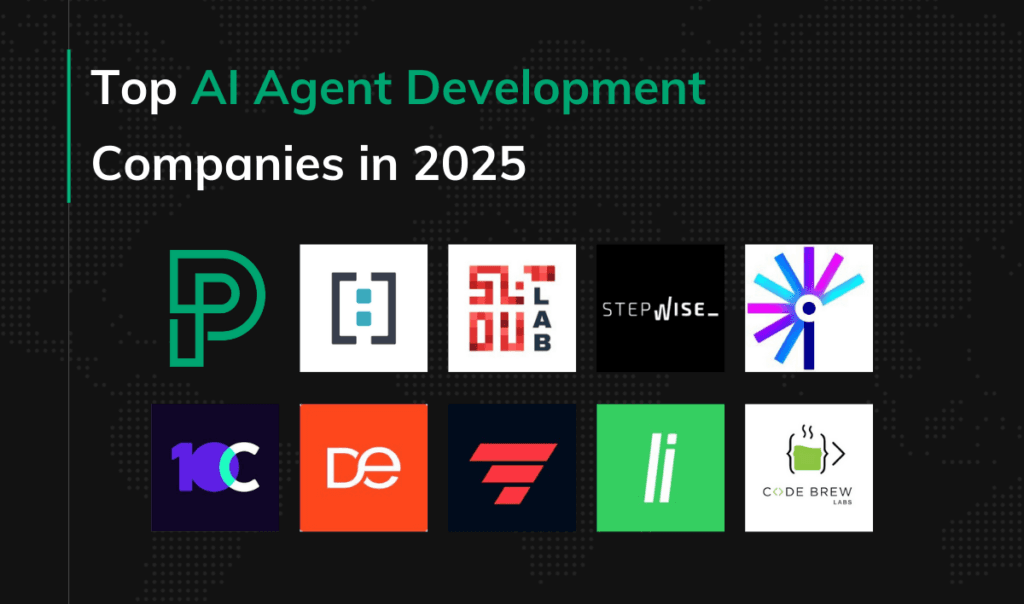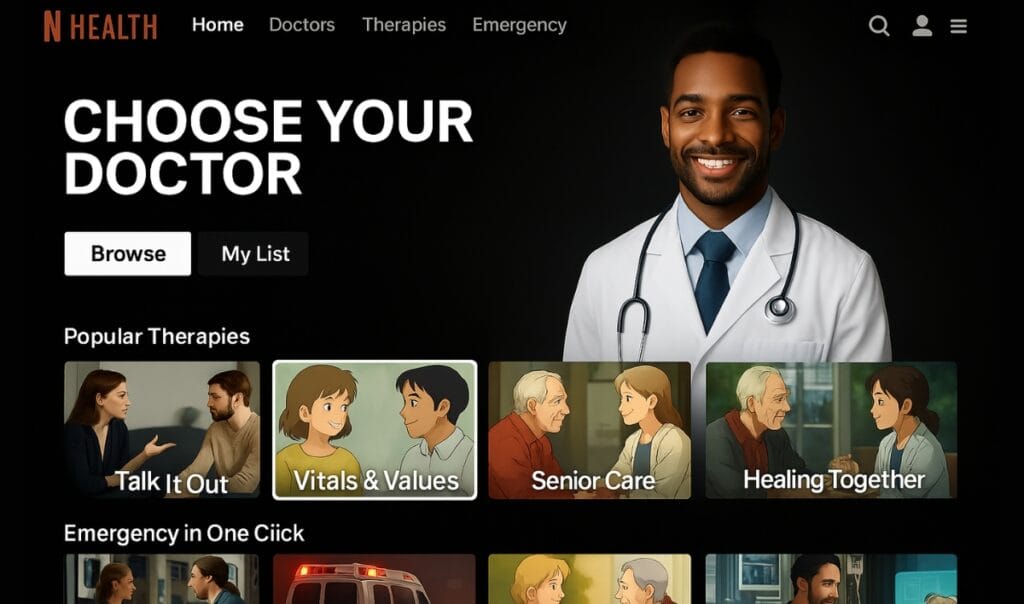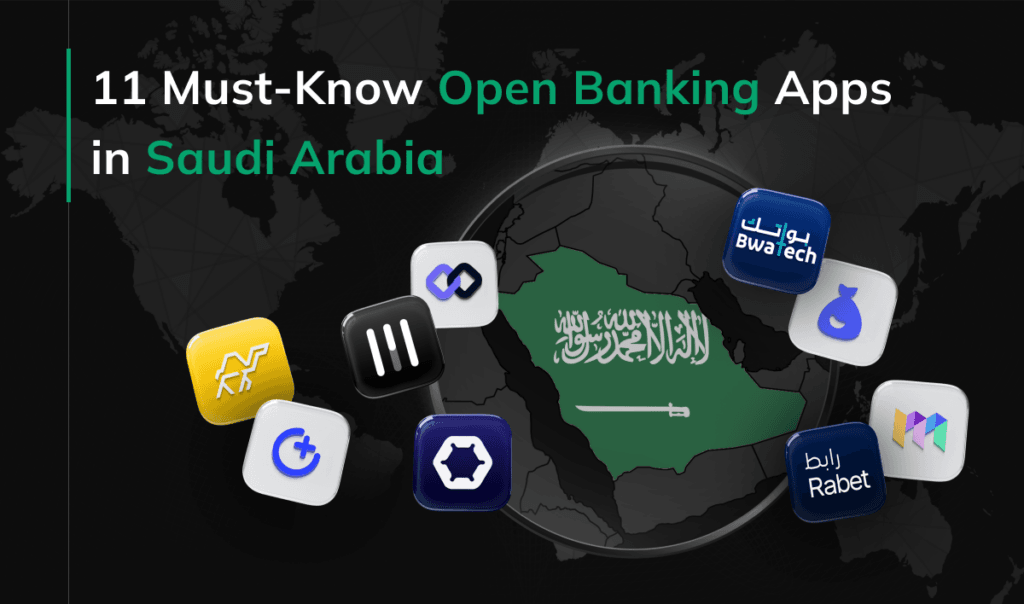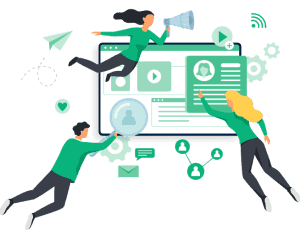8 ways to automate your HR department (and it’s not only AI)
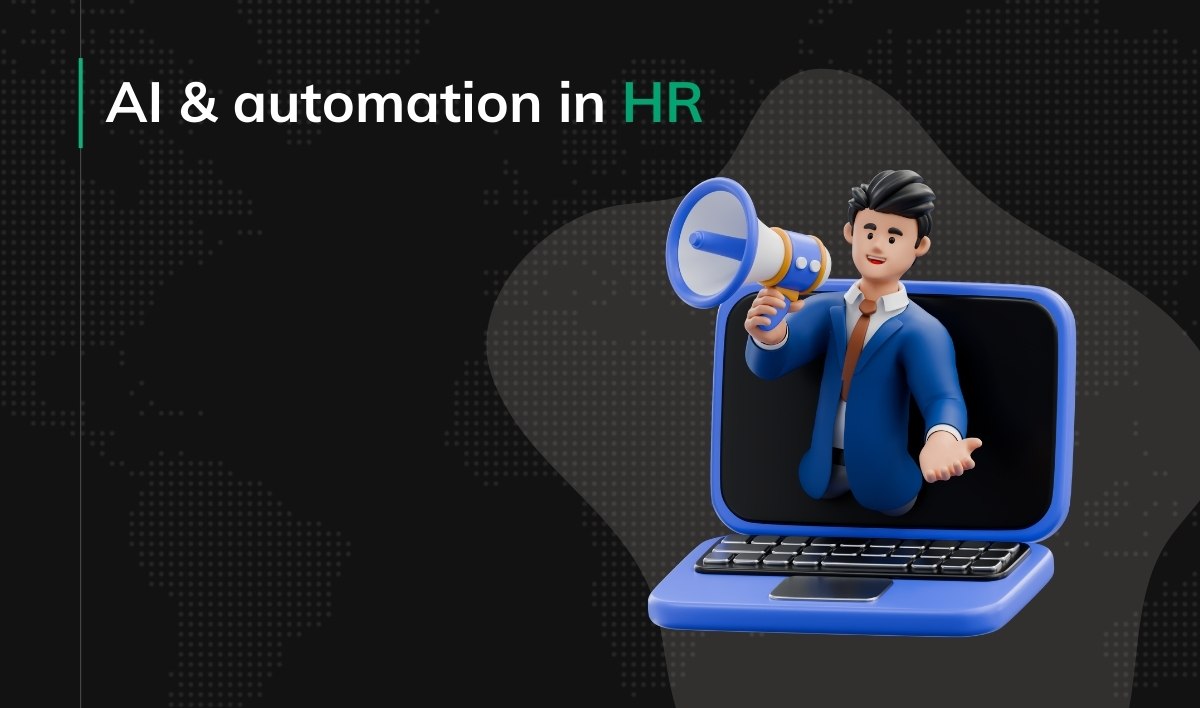
HR is full of repetitive tasks—screening applicants, answering common questions, scheduling interviews, and more.
Automation makes these tasks easier, and AI takes it even further. At Pragmatic Coders, we’ve automated HR processes, and the results speak for themselves.
Here are eight ways our HR team is using automation and AI —from simple fixes to advanced workflows—and why you should, too.
AI automation for HR
Examples of AI in HR
1. Text generation in HR
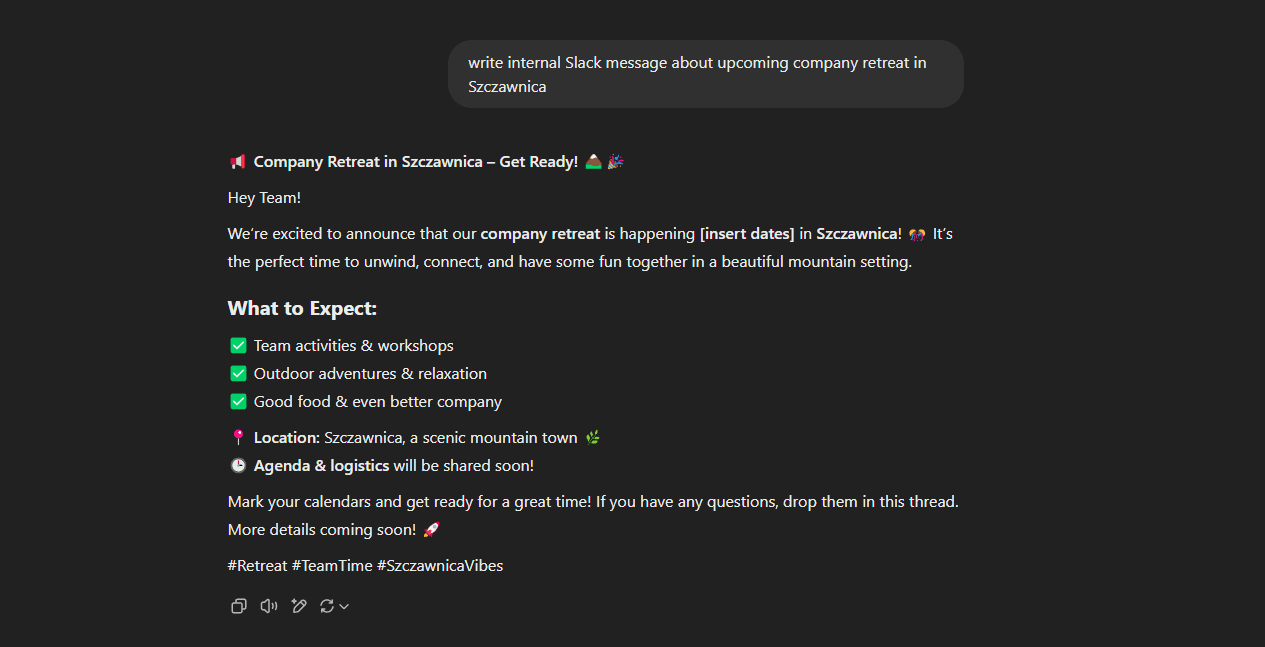
A Slack message draft for a company retreat announcement in Szczawnica, generated in ChatGPT.
HR professionals often juggle numerous writing tasks—from drafting internal announcements to updating policy documents. Leaders estimate they spend 3 to 10 or more hours per week preparing essential communications for their organizations – and this time could be better spent.
Generative AI in HR for content creation
- Drafting announcements & policy summaries
Generative AI tools (e.g., ChatGPT) can create a first draft of memos, announcements, or policy updates in seconds.
We already use ChatGPT daily to generate article content and draft internal communications. This saves us time on routine writing tasks so we can focus on more strategic HR initiatives.
- Writing job descriptions
AI can parse existing job posts, analyze role requirements, and generate a polished draft that HR can fine-tune.
We feed ChatGPT basic role info and desired qualifications; it returns near-complete job ads, ready for final edits.
- Rewording sensitive topics
AI can help rewrite complex or delicate messages with clarity and empathy—vital for communications around policy changes or performance reviews.
That said, we still rely a lot on standard automation, such as pre-built templates for internal newsletters, job postings, presentations, etc. We use shared Google Docs and Canva templates so that the HR team doesn’t have to reinvent the wheel each time.
2. The FAQ overload problem
We all know that a significant portion of HR inquiries often revolves around recurring themes: “What’s the vacation policy?”, “How do I update my personal information?” or “Where can I find the benefits form?”
In fact, employees spend up to 40% of their time searching for essential information—essentially working just to get work done. (Deloitte)
Instead of HR staff answering the same queries repeatedly, an AI chatbot handles them instantly.
HR chatbots for FAQs
A traditional way of dealing with frequently asked questions of your employees is having some sort of centralized knowledge base with articles for common questions. That’s what we started with; each new employee at Pragmatic Coders is granted access to an internal Wikipedia-like portal on Google Sites.
Yet, we wanted to go a step further. That’s why we’re developing our HR agent:
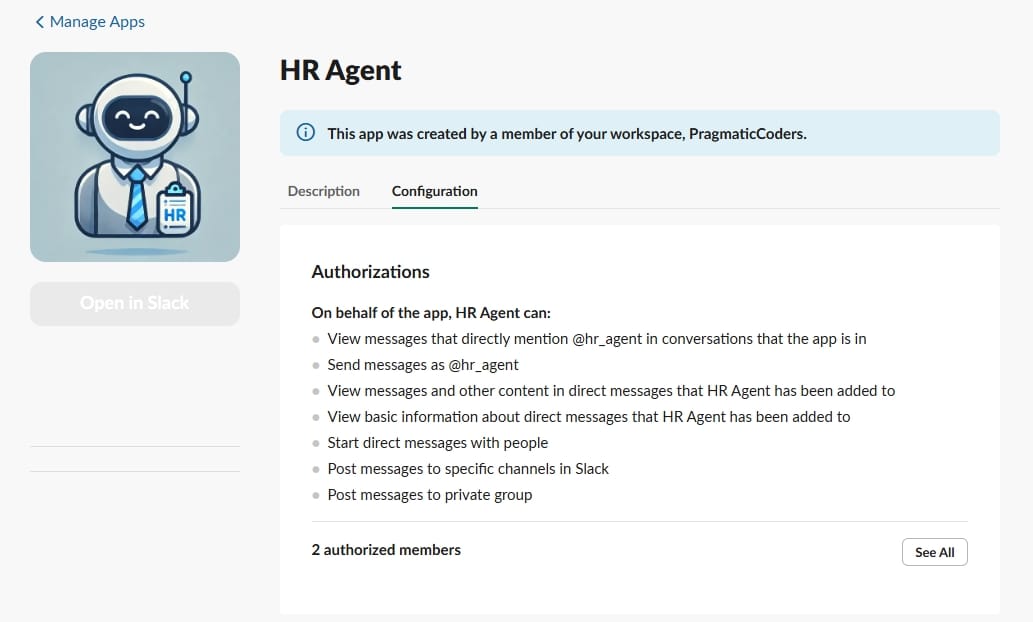
A Slack app settings page for our upcoming HR Agent.
- Instant Q&A via NLP (coming soon)
Our planned AI-driven chatbot will interpret questions in natural language, pulling accurate answers from an internal database. It will answer questions and provide related links to Wiki for more information. This solution is currently in development and represents our next step in HR automation. - 24/7 availability
Whether it’s a weekend or late at night, employees can get instant support without waiting for HR to be online.
3. Recruitment & talent acquisition
AI-driven recruitment automation in Make.com, collecting data from LinkedIn and GitHub.
Recruitment is often the biggest time sink for HR teams—writing job descriptions, posting ads, screening mountains of CVs, and coordinating interviews. It takes time, and time takes money: Lanteria highlights that each day a job remains unfilled costs companies approximately $500 in lost productivity.
That’s why many companies go for all kinds of automation to shorten this process:
- Applicant tracking systems (ATS)
Many ATS platforms (e.g., Recruitee, Greenhouse) streamline application intake, track candidate statuses, and centralize communication. - Interview scheduling tools
Integrations with Google Calendar, Outlook, or platforms like Calendly reduce the back-and-forth of coordinating candidate and interviewer availability. We have an automated system that sends interview invites directly to candidates after they choose a time slot.
Basic recruitment automation cuts down repetitive tasks so that HR runs more smoothly before moving to advanced AI.
How HR can use AI automation for recruitment
I asked my co-worker, Justyna, the recruitment specialist at Pragmatic Coders, about the most difficult parts of her work:
The biggest challenge is finding the right candidate who will be interested in cooperation and will successfully complete the entire recruitment process. The most time-consuming part here is the direct search and acquiring candidates for the process. What’s more, there’s also the matter of security, data protection & flexibility, and personalization. In terms of recruitment, personalization is very important to stand out and capture the candidate’s interest.
To address these challenges, we started improving the recruitment process with AI:
- AI-driven candidate screening
Intelligent systems can analyze resumes for relevant skills, experience, and even portfolio links—removing unqualified applicants quickly. That’s what we went for:
We developed an AI-driven recruitment assistant that integrates with LinkedIn and GitHub to automatically evaluate a candidate’s technical background, helping us shortlist top talent faster. We also plan to build a tool for filtering CVs submitted to Recruitee—if there are no relevant keywords or the answers in the recruitment survey contradict the expected ones, the CV will automatically be moved to the rejected applications in Recruitee.
We created an AI-powered workflow to automate tech candidate evaluation. It saves us time and ensures objective & data-driven hiring.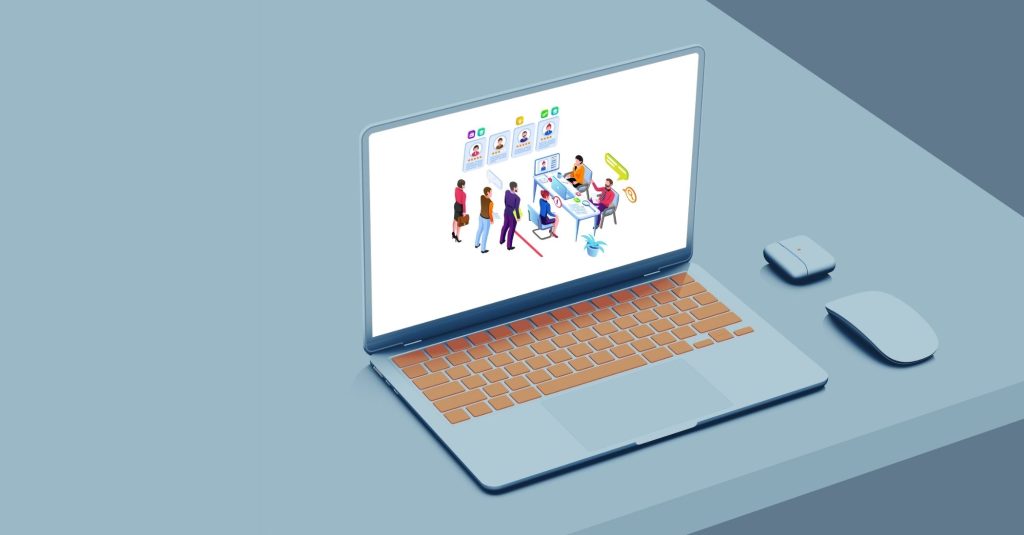
Automate recruitment: How to automate tech hiring with AI
- Automated candidate outreach
AI tools can send personalized messages to candidates on LinkedIn so that response rates improve and manual effort decreases:
Definitely, in the first half of 2025, we will be using an AI solution from LinkedIn that will read people’s profiles and, based on the information in the profile, create highly personalized messages. This will save time and improve response rates, especially for niche tech roles.
Alternatively, we’re thinking about creating such automation ourselves: our AI would send personalized messages to candidates, engage them in conversation, and encourage them to submit their CVs. Once received, the CVs would be automatically added to our Recruitee database, where AI could analyze them and notify recruiters about the most promising candidates worth contacting.
Additionally, we are implementing a recruitment chatbot that will be available 24/7 to answer candidate questions—whether on our career page or other platforms—for a seamless and responsive candidate experience.
- AI-powered feedback
We plan to automate interview feedback by letting an AI agent handle the summary process, rather than waiting for a busy developer to write detailed notes.
4. Onboarding & offboarding
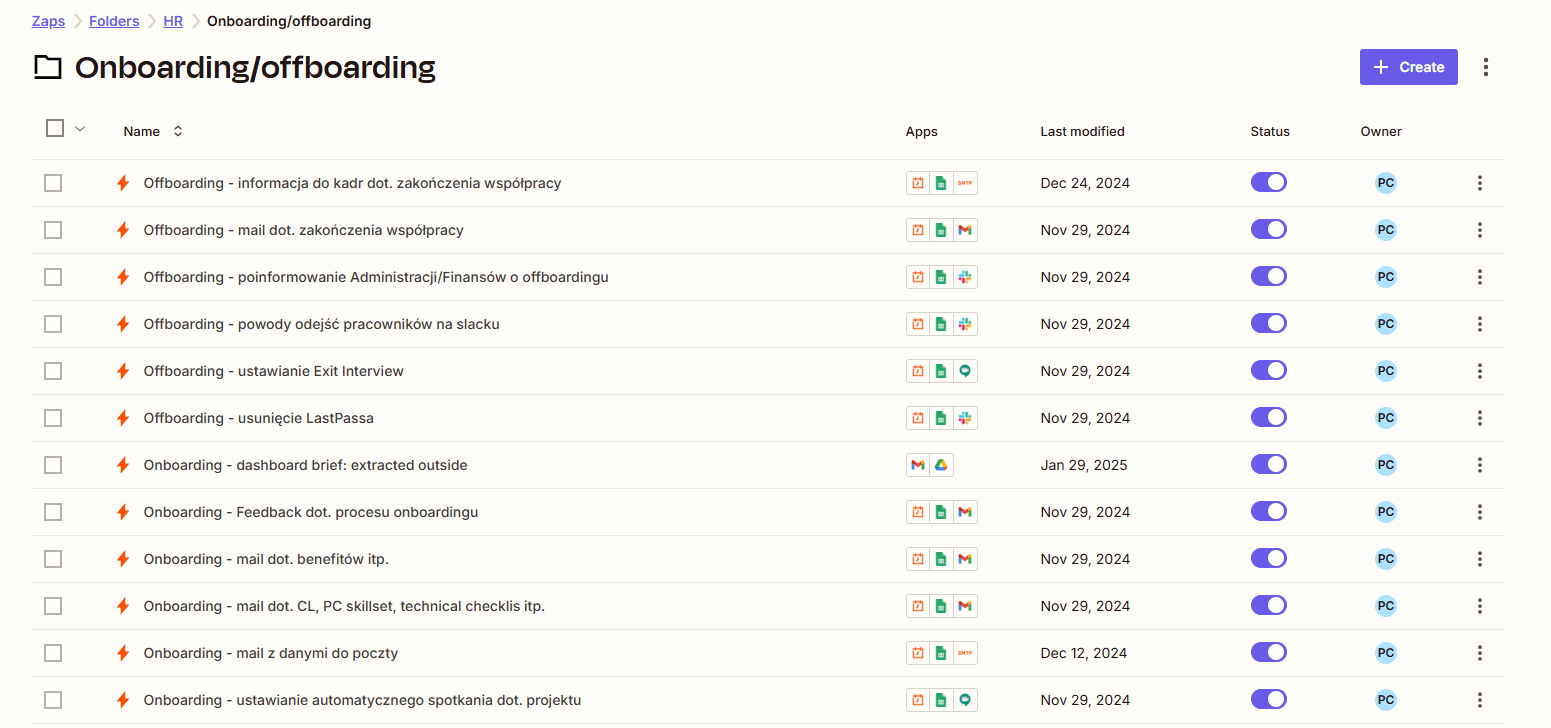
A list of automations for onboarding and offboarding processes at Pragmatic Coders.
According to research by Brandon Hall Group, organizations with an effective onboarding process see an 82% increase in new-hire retention and a productivity boost of over 70%. Conversely, poor offboarding can lead to compliance risks and negative word-of-mouth.
Typically, HR teams use tools like Trello, Asana, or Google Sheets to map each step—paperwork, equipment setup, orientation sessions— and keep tasks transparent and on track. Automated email sequences are also a standard solution.
We have a set of Zapier automations for onboarding and offboarding. For example, when an employee is marked as a new hire in our system, they automatically receive a “Welcome Packet” email series over their first week. For offboarding, we use a shared checklist spreadsheet and Slack reminders for each step in the process so that no critical action (like disabling accounts) is overlooked.
How HR can use AI automation for onboarding & offboarding
When it comes to onboarding, the biggest challenge for the new employees is to familiarize themselves with the company, its procedures, workflows, etc. Here, a chatbot or virtual assistant can guide new hires through essential tasks—document submissions, tool setup, and policy acknowledgments—answering questions in real-time.
We plan to adapt our HR chatbot for onboarding so that new hires get personalized checklists based on their role or department.
5. Learning & development (L&D)
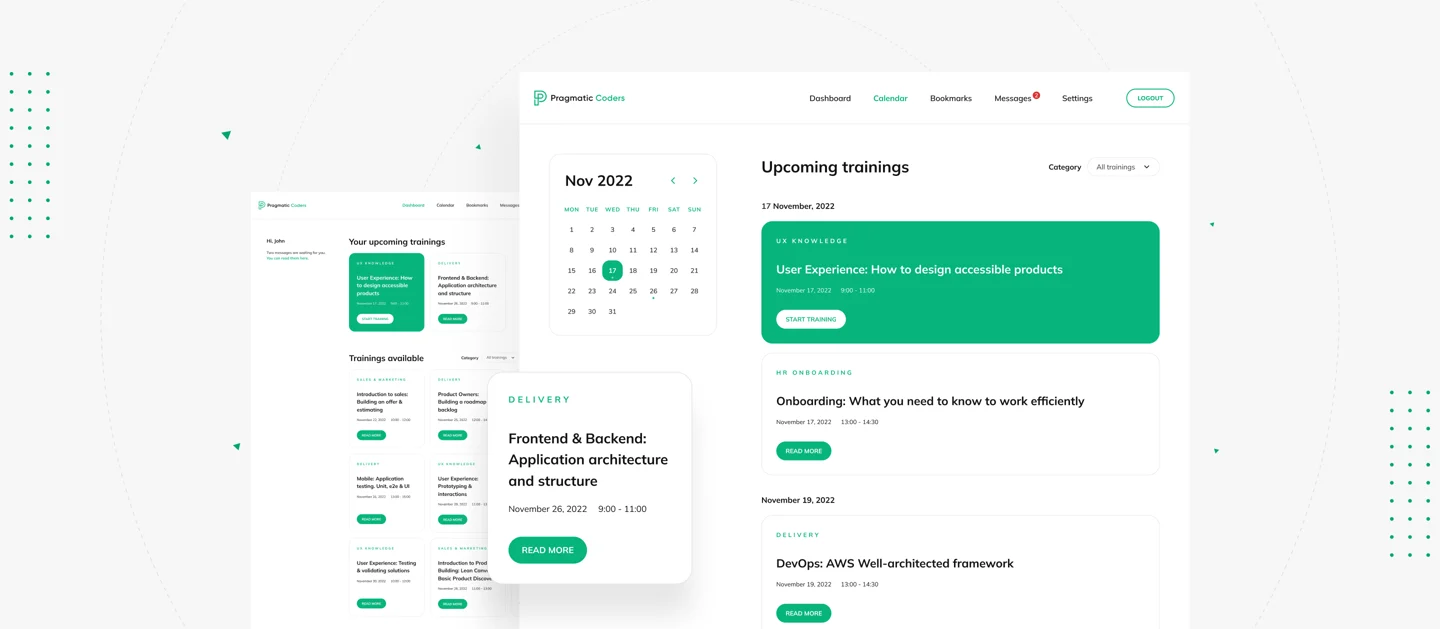
Our internal employee training automation system.
Continuous learning is key to career success, according to 91% of L&D professionals. With 88% of organizations worried about retention, offering learning opportunities is their top strategy. (LinkedIn’s Workplace Learning Report 2025).
Yet, how do HR professionals manage the challenge of employee training?
- Centralized course sign-ups
Online forms or Learning Management Systems (LMS) allow employees to browse available courses and register automatically. - Automated reminders & tracking
Automated notifications can prompt employees to complete training modules or alert them when a new session is scheduled.
We introduced a training automation system where employees log in, select their department, and choose from available sessions. They receive an immediate confirmation and calendar invite—no manual back-and-forth. After each training, our system automatically marks attendance, so HR stays updated on who’s completed essential sessions.
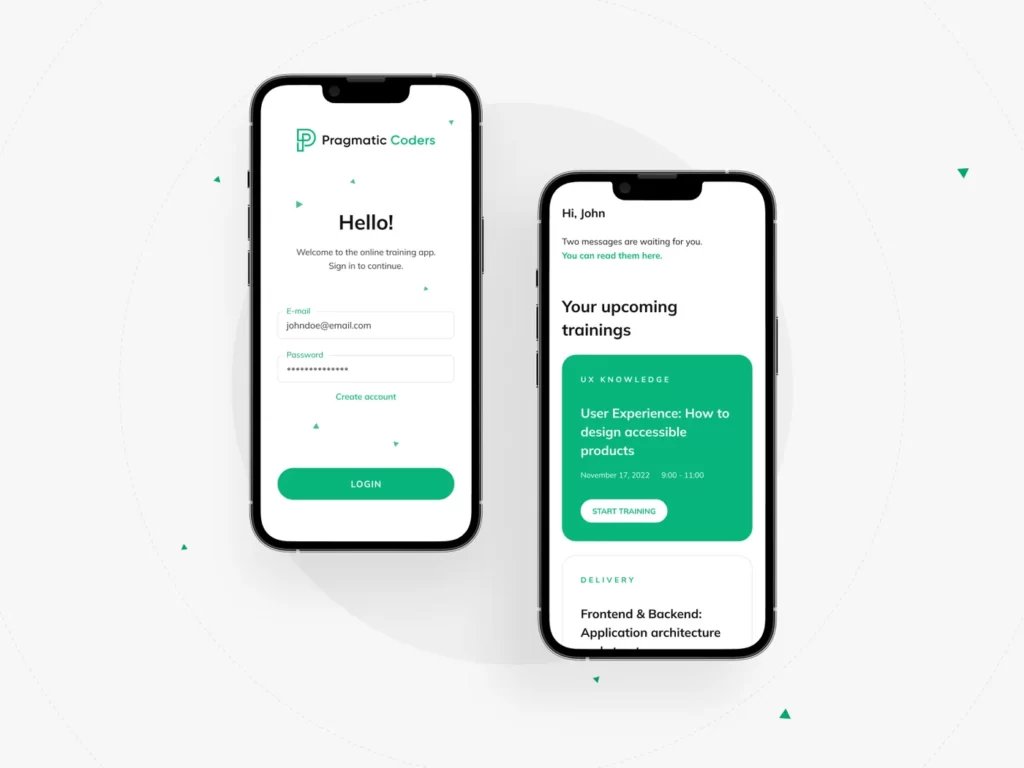
HR training management software: Automate employee training
Discover how we helped our HR department streamline employee training by developing a custom automation system in less than 3 weeks.
Learn MoreHow HR can use AI automation for Learning & Development
AI algorithms can analyze an employee’s role, performance metrics, and career goals to recommend the most relevant training courses. However, this probably makes sense mostly for large corporations with extensive internal training programs. These companies can leverage AI to personalize learning based on roles and career goals. It also works well for organizations with structured L&D programs, where employees follow clear career progression paths.
6. Performance management
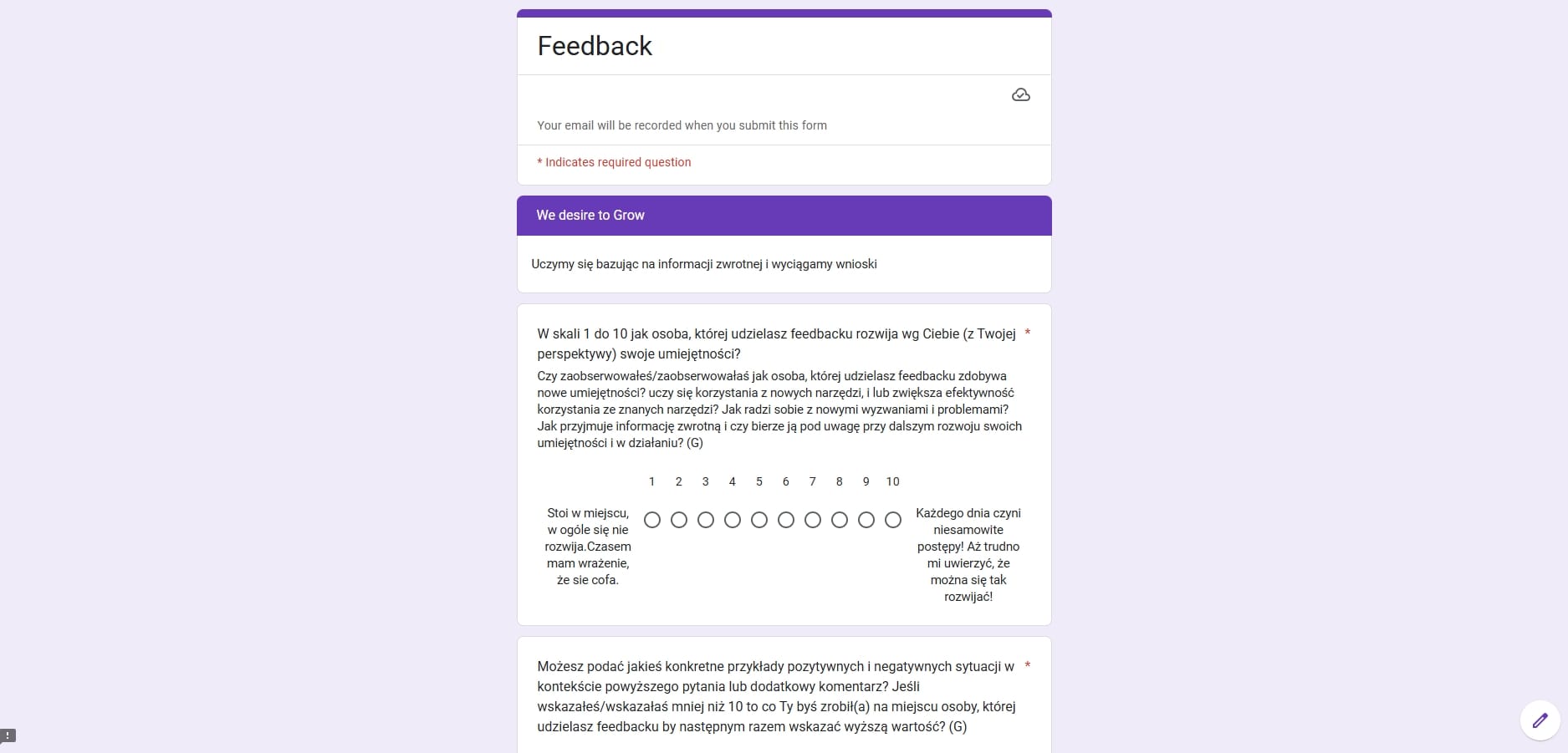
Automating employee feedback with Google Forms.
Many companies still rely on long, subjective performance reviews that drain time and energy. Only 14% of employees find them helpful (Gallup), yet managers and HR spend hours collecting feedback, filling out forms, and holding meetings with little impact.
Here are 2 ways we address these challenges with standard (no AI) automation:
- Template-based feedback forms
Standardized digital forms guide managers and peers to provide structured, relevant feedback.
We use a pre-formatted Google Form for employee feedback, reducing guesswork and ensuring consistent data across teams.
- Automated review cycles
There are SaaS tools like 15Five or Lattice that can send scheduled reminders for check-ins, compile feedback, and store everything in one place—no manual chasing. Yet, in fact, you can get the same results using simple Zapier automations; that’s what we went for:
We have implemented an automated reminder system that notifies team leaders about upcoming development conversations, contract extensions, and quarterly reviews.
How HR can use AI automation for performance management
While automation streamlines processes, AI takes performance management a step further by analyzing data and summarizing feedback.
Many SaaS tools, such as the previously mentioned 15Five or Lattice, offer AI-powered features that analyze feedback and identify key themes, summarize performance reviews, and provide managers with insights to improve feedback clarity
But… do you really need specialized HR software for this?
The answer is no.
- With the right prompts, AI tools like ChatGPT can analyze feedback and generate summaries—without requiring a separate HR system.
- If you need custom AI automation, you can build a custom solution that integrates directly with your existing HR workflow.
And if you need help with that, we can create AI-powered workflows that fit your company’s unique performance management process, including:
✔️ Automating feedback collection and summarization
✔️ Building AI-powered performance review assistants
✔️ Seamlessly integrating AI with your current HR software
No extra HR tools needed—just AI that works for you.
7. Employee engagement & communications
Employee engagement is key to productivity and retention, but only 23% feel truly engaged (Gallup). Scattered communication and manual efforts make it hard for HR to maintain a meaningful connection.
So, how can you automate communication while boosting employee engagement at the same time?
You can use platforms like Slack or Microsoft Teams to send automated announcements, reminders, or polls, ensuring employees stay in the loop. Check these 3 examples of how we do it 👇
PC Gadgets
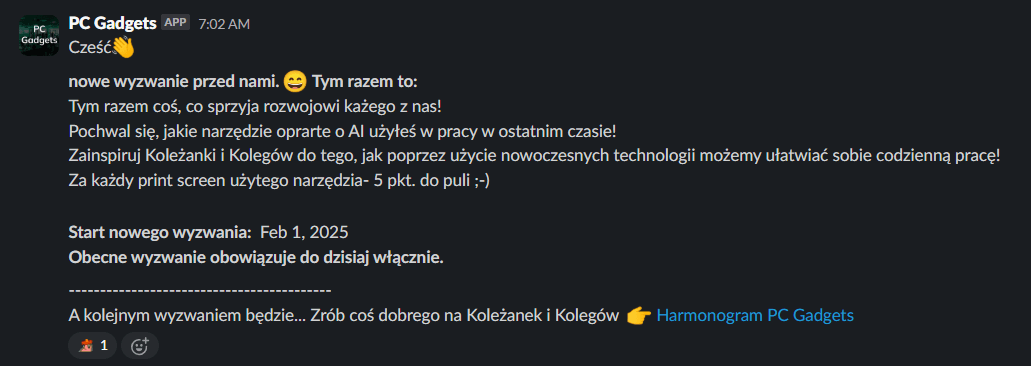
A Slack message announcing a new AI-related workplace challenge for employees.
We have an internal PC Gadgets store with branded merchandise (t-shirts, hoodies, bags, thermoses, mugs, deck chairs, etc.). There is also a dedicated Slack channel: #pc_gadgets.
Here’s how it works:
- Every two weeks, we introduce a new challenge (e.g., walk 8,000 steps).
- Employees submit a screenshot from their app as proof.
- An automated system assigns points for each submission, which can be redeemed in the store.
- Automatic Slack notifications inform employees about upcoming challenges.
Monday Talks

A list of automations for the “Monday Talk” initiative (reminders, acknowledgments, and notifications).
- Employees can sign up for a Google Sheet to present a topic on a selected Monday.
- Once scheduled, an automatic Google Calendar invite is sent to all employees.
- Slack reminders notify the team about upcoming Monday Talks.
- After presenting, the speaker automatically receives 40 points for the PC Gadgets store.
Automating recurring communications
Beyond templates, we’ve automated the delivery of cyclical communications. For example, our system automatically generates and sends breakfast meeting invitations, team event announcements, and other regular communications without manual intervention each time.
8. Attendance & reporting + automated reports
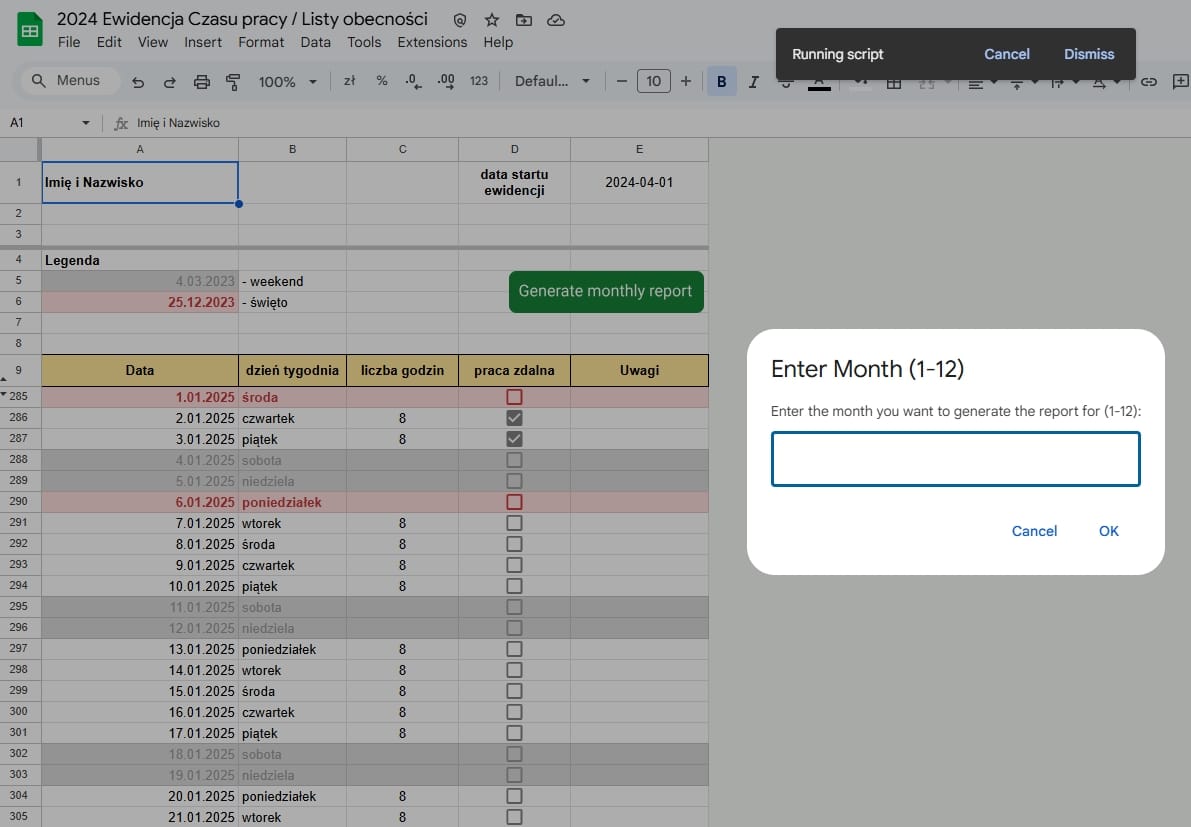
A Google Sheets attendance tracker with an automated monthly report prompt.
Finally, admin work. HR teams spend up to 57% of their time on it (Deloitte), especially on tracking attendance and manually creating reports, which took us a lot of time and led to errors. We solved this with a Google Sheet automation:
- Automated Slack reminders notify employees at the end of each month to complete their reports.
- After filling in the Excel sheet, the system generates a ready-to-print document.
- Employees print, sign, and submit the report to HR.
Ready to implement AI in your HR department?
HR automation saves time, improves hiring, and keeps employees engaged, ultimately helping your organization grow.
However, we also recognize that automation comes with concerns—particularly around data privacy, GDPR compliance, and the types of candidate or employee data AI can use. That’s why we design solutions that truly make work easier, rather than adding extra complexity, creating confusion, or implementing AI just for the sake of it.
Our focus is on real efficiency, security, and making recruiters’ jobs simpler—not harder.
Let’s discuss your biggest HR challenges and how automation or AI can solve them. Schedule a consultation today.


